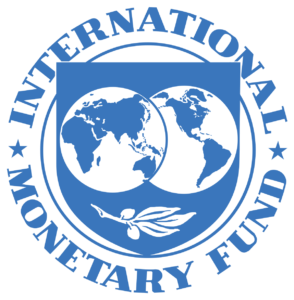IMF loan explained in clear terms!
 Getting a loan, generally, is not limited to personal or business purposes. This is because, there are countries around the world that do not generate enough revenue to cater to their financial needs. This is particularly true about medium to low income earning countries that cannot meet their international financial responsibilities.
Getting a loan, generally, is not limited to personal or business purposes. This is because, there are countries around the world that do not generate enough revenue to cater to their financial needs. This is particularly true about medium to low income earning countries that cannot meet their international financial responsibilities.
To help countries in such situations, the International Monetary Fund (IMF) was established to provide loans to enable countries carry out, effectively, their governmental functions. Check out Long Term Business Loans in Nigeria .
Why does the IMF Loan Exist?
Having a country that cannot pay its bills because of financial crisis is will pose a major threat to the international financial. Countries like this could, in a short while, offset the international financial system, because they are unable to earn enough on the capital market to preserve a safe level of reserves and also meet their international payment obligations.
IMF loans exist to help member countries take care of financial problems, steady their economies, and achieve a sustainable level of growth. The IMF is not a bank and, as such, it does not finance projects. Project financing is a duty of development banks and other agencies.
What are the IMF Loan conditions?
There are no static conditions for obtaining an IMF loan. They set the conditions through a dialogue between the government of the country involved and the IMF. Meanwhile, a country is only considered when in any of the following groups:
- Depleted international reserves.
- Economic activity stagnant or falling.
- A high number of firms and households going bankrupt.
- A near state of financial crisis.
- Currency under attack in the foreign exchange markets.
When applying, through a letter of intent, the IMF and the government reach a decision on a set of policies intended at attaining some specific goals and objectives.
When your loan request is approved, they freedom the loan in installments over the duration of the program. This is to ensure that the goals of the installment are achieved before another installment would be released for the next. IMF loans usually provide a certain percentage of the financial resources required by a country.
What are the IMF Loan major lending facilities?
Below are the IMF facilities;
1. Stand-By Arrangement (SBA)
Since its inception in 1958, the IMF’s Stand-By Arrangement (SBA) has been the major lending facility for member countries. While its rates are non-concessional, they are almost always lower than a country borrowing from raising finance through private markets. In 2009, for instance, the SBA was upgraded to accommodate more borrowing limit and a higher upfront fund. Its conditions were also reviewed.
2. Flexible Credit Line (FCL)
This is for countries with sufficient fundamentals, strong policies, and an excellent track record of policy implementation. Conditions are eased in the Flexible Credit Line, and there are no caps on the size of the credit line. They don’t phase or condition disbursements on certain policies.
3. Precautionary and Liquidity Line (PLL)
This facility provides money to balance the payment needs of countries with existing sound policies. This money could be to meet the actual or potential balance payment of the country. Furthermore, they design it strictly for countries with sound policies.
4. Rapid Financing Instrument (RFI)
This could called an emergency loan because it provides quick and low access financial support to member countries in need. It does this without the need for a complete implementation or goal achievement program. This facility takes care of needs including natural disasters, emergencies from fragility, commodity price shock, and post-conflict situations.
5. Extended Fund Facility
The extended fund facility is used to help countries stabilize the payment difficulties related to structural problems. These problems usually take more time to correct compared to macroeconomic imbalances.
6. Trade Integration Mechanism
Another facility through which the IMF provides loans to countries suffering from multilateral trade liberalization is the trade integration mechanism. This mostly affects developing countries and results from the decline in export earnings when it loses access to certain markets. It could also be as a result of food imports going up after removing agricultural subsidies.
For countries suffering from inadequate finance need to run their economies, IMF loan provides a great alleviation scheme. It is most beneficial to low-income countries, offering debt relief, as well as a way to repair the damage.
That good help Nigeria